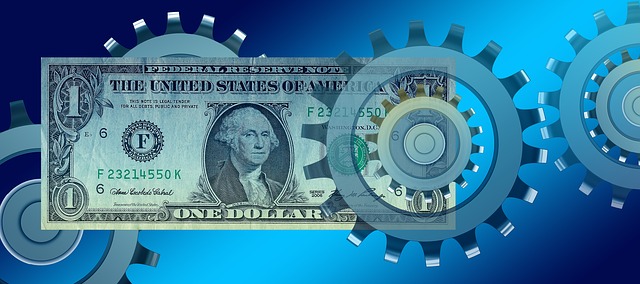How to Fight Inflation - The Battle
Posted by AIW on Jun 6th 2022
How to Fight Inflation
Besides debts and taxes, inflation will be another significant problem we have to face over time.
The question here is:
"What basically is inflation?"
In simple words, inflation is how quickly or rapidly the value of a currency decreases, resulting in the general rise of prices for services or products.
Many minor episodes of deflation have occurred in the US, but overall, wage activity has been backed by rising inflation. An increase in the cost of things may emerge when money is abundant in the economy. Furthermore, an average household's two key income sources, property and revenue growth, increase at a pace equal to or higher than inflation, neutralizing the adverse effects of inflation.
How Can You Calculate Inflation?
The consumer price index (CPI) and the competitive prices index (WPI) are the two indexes used to assess inflation. It's important to note that these two indicators are currently being used to examine inflation rates on a commercial level by considering the cost of items supplied in bulk, or wholesale, to retailers and suppliers and a client's everyday costs of healthcare and housing.
Even while the state takes steps to keep inflation in check, it is still necessary to be economically responsible, not only with your spending but also with your pension savings. Even if your pay increases in line with inflation, keep in mind that inflation increases far more rapidly than your wage. In addition, certain wages do not rise with inflation.
The Worst Tax
Inflation is commonly known as the "worst tax", mainly because most individuals don't know its consequences. For example, inflation is growing at 8 per cent, and many people feel like they've gained 5 per cent in savings, but in reality, they are 3 per cent poorer.
So everyone must understand how inflation works and how they can prepare to keep their resources from losing their buying value.
Consensus for Inflation Reduction
According to a growing agreement between central bankers and the public, inflation reduction and price stability should be the primary or long-term aim of monetary policy. Furthermore, these premises are central to the case for monetary policy's principal long-term aim of price stability.
A monetary policy to reduce joblessness might increase inflation rather than cut it. Price stability encourages better economical production and faster growth over the long term. Since price stability will lead to better financial outcomes for a long time, monetary policy should aim for price stability as its overarching objective.

Ways to Fight Inflation
Economists have suggested different methods of fighting and controlling inflation. Some of these methods are more effective than others, but implementing each of them can result in a better economy.
Price Controls
Price restrictions are government-imposed ceilings or floors on the price of specified items. Price controls may be used in conjunction with wage restrictions to keep wage inflation under control.
The government regulates salaries, prices, and the rates at which they vary, which are all examples of price restrictions. There are several ways in which governments might implement such rules, but the most usual one is to target a specific market for a particular product. Governments have two options for limiting the growth in prices: price caps like rent restrictions or minimum wage rules like the latter.
Wage Control
Suppose a raise in wages is the primary driver of inflation. In that case, it is feasible to bring inflation under control by slowing the rate of wage growth (e.g. strong unions negotiating for higher actual pay). As a result of slower income growth, cost-push inflation is mitigated, but demand-pull inflation remains unchanged.
In the 1970s, the United Kingdom realized that it was difficult to control inflation via income programs, especially in countries with powerful labour unions.
Contractionary Monetary Policy
Contractionary Monetary Policy is when the central bank utilizes its money-making powers to combat inflation. It's the bank's way of stifling economic expansion. There is a correlation between high inflation and a slow economy. In addition to being a restrictive policy, it is also known as a monetary policy that limits liquidity.
The goal of monetary policy is to keep inflation under control by limiting the amount of money in circulation. Free marketers strongly link inflation and currency value. Inflation may be kept in check if the increase in the money supply is restricted.
Reserve Requirements
The government forced reserve requirements or the value of the money banks to have on hand to meet demands, which was another tool the Federal Reserve used to control the economy till 2020.
When banks had to stop more access to funds to customers, customers would have less access to credit. In 2020, the Federal Reserve was able to reintroduce capital reserves, even though they will be zero.
Change Fiscal Policy
Increasing taxes, such as income tax and VAT, and reducing expenditure may be done by the government. This enhances the government's financial condition and reduces spending in the economy.
With both of these measures, inflation is kept in check by limiting the increase in total demand. Growth may be slowed to alleviate inflation expectations without a recession if the economy overgrows.
Discount Rate
The cost of borrowing money that the Federal Reserve charges on loans provided to corporate financial firms by the Federal Reserve Bank can be done on discount rate. Furthermore, discount window refers to the lending facility used to make these short-term repayments. Corporate boards and administrators of financial companies and the Federal Reserve agree on the rate of return, which is the same throughout Reserve Banks.
Although the discount window's essential role is to meet short-term funding requirements and ensure monetary stability, the leverage ratio is another cost of borrowing money that has to be increased to moderate inflation.

Conclusion
In conclusion, it is significant to understand inflation to determine the different aspects of consumer spending, economy, employment rates, tax policies and business investment. Moreover, it is important for general public to understand inflation as well, because once they understand it, they can take better financial decisions. Furthermore, the public has the ability to take better decisions but the real force is government as the governments have quite a few ways to stop inflation, and the most effective ones are discussed above.

